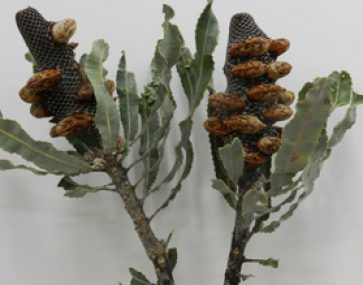Banksia’s
Did you know?
Banksia are named after Sir Joseph Banks. Banks collected the flower in 1770 during Captain Cook’s first voyage to Australia. The have a permanent place in the Australian popular imagination as a result of May Gibbs depiction of evil banskia men in Snugglepot and Cuddlepie. Heavy producers of nectar, banksias form a vital part of the food chain in the Australian bush. They are an important food source for all sorts of animals, including birds, bats, rats, possums, stingless bees and a host of invertebrates. Having a banksia in your garden is a good way of ensuring a influx of visiting birds, feasting on the nectar.
Types
There are around 170 types of banksia. Many varieties are commercially available. Banksia are recognisable by their characteristic flower spikes and fruiting “cones” and heads. Banksias range from woody shrubs to trees up to 30 metres tall. They are generally found in a wide variety of Australian landscapes. Each flower spike, consists of a woody axis covered in tightly-packed pairs of flowers attached at right angles. A single flower spike generally contains hundreds or even thousands of flowers. Banskia flowers are usually yellow, but orange, red, pink and even violet flowers also occur.
Selection and Care
Select banksia where the flowers are open, and the leaves look alive. Avoid wet flowers. These are a long lasting flower, that can also be dried. Cut a minimum of 2cm off the stem, strip the bottom leaves off, and put in cold water with a flower preservative. Add water as needed.
Availability
August to March.

